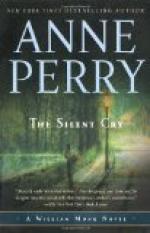|
This section contains 5,145 words (approx. 18 pages at 300 words per page) |

|
SOURCE: Loughman, Celeste. “The Seamless Universe of Oe Kenzaburo.” World Literature Today 73, no. 3 (summer 1999): 417-22.
In the following essay, Loughman explores Ōe's use of “simultaneity—of past and present, fact and dream, history and myth” in The Silent Cry, arguing that Ōe constructs an ambiguous moral universe in the novel.
No term or concept appears more frequently in Ōe Kenzaburō's writing than “ambiguity.” Ōe made it the focus of his 1994 Nobel Lecture, “Japan, the Ambiguous, and Myself,” and has acknowledged directly its prominence in his thinking: “I wrote a book entitled The Methods of the Novel (1978) in which I explained that the concept of ambiguity was very important to me” (“Interview” with Yoshida, 372). Closely associated with ambiguity is the idea of simultaneity—of past and present, fact and dream, history and myth—which results in the ambiguity or blurring of distinctions and boundaries that constitutes Ōe's seamless...
|
This section contains 5,145 words (approx. 18 pages at 300 words per page) |

|


